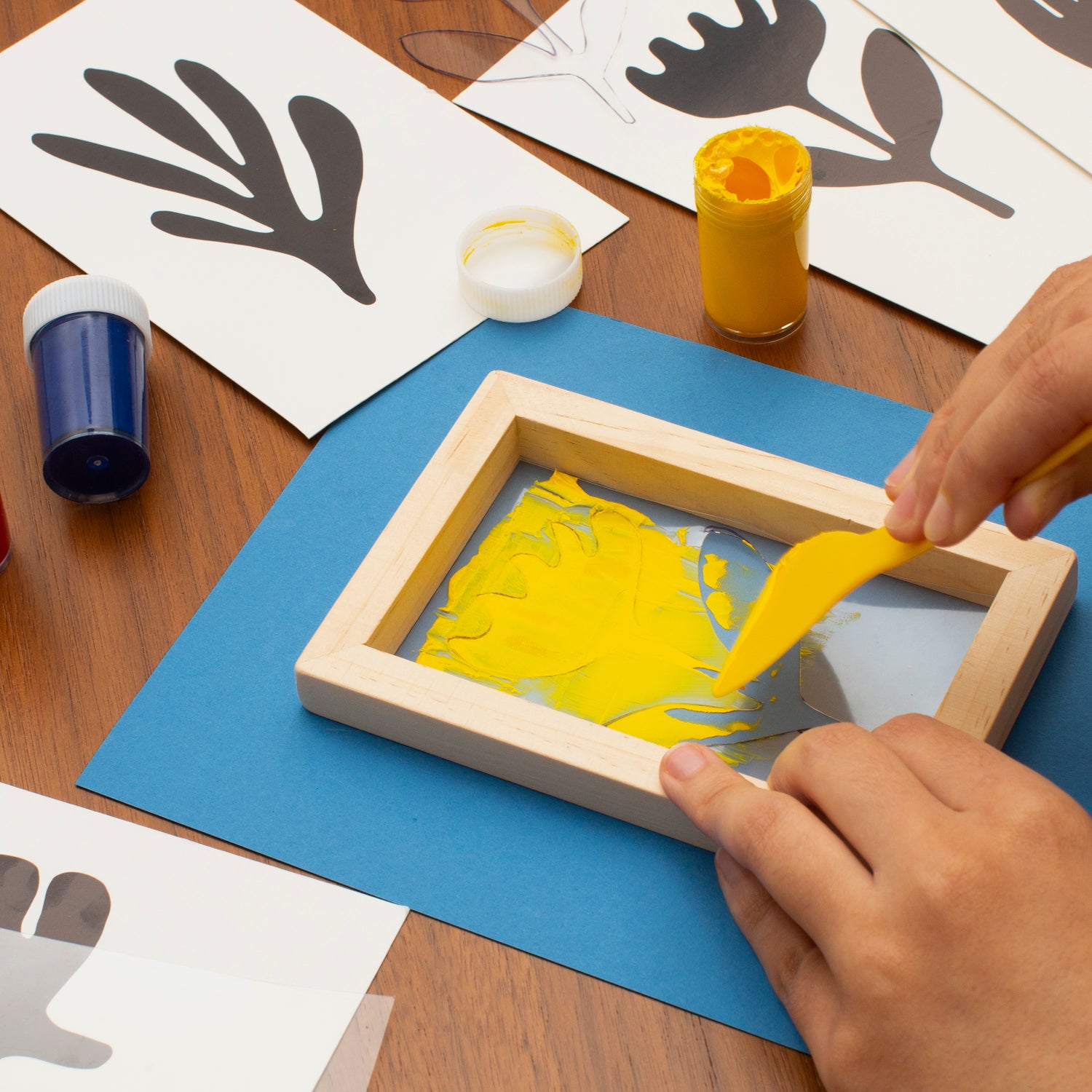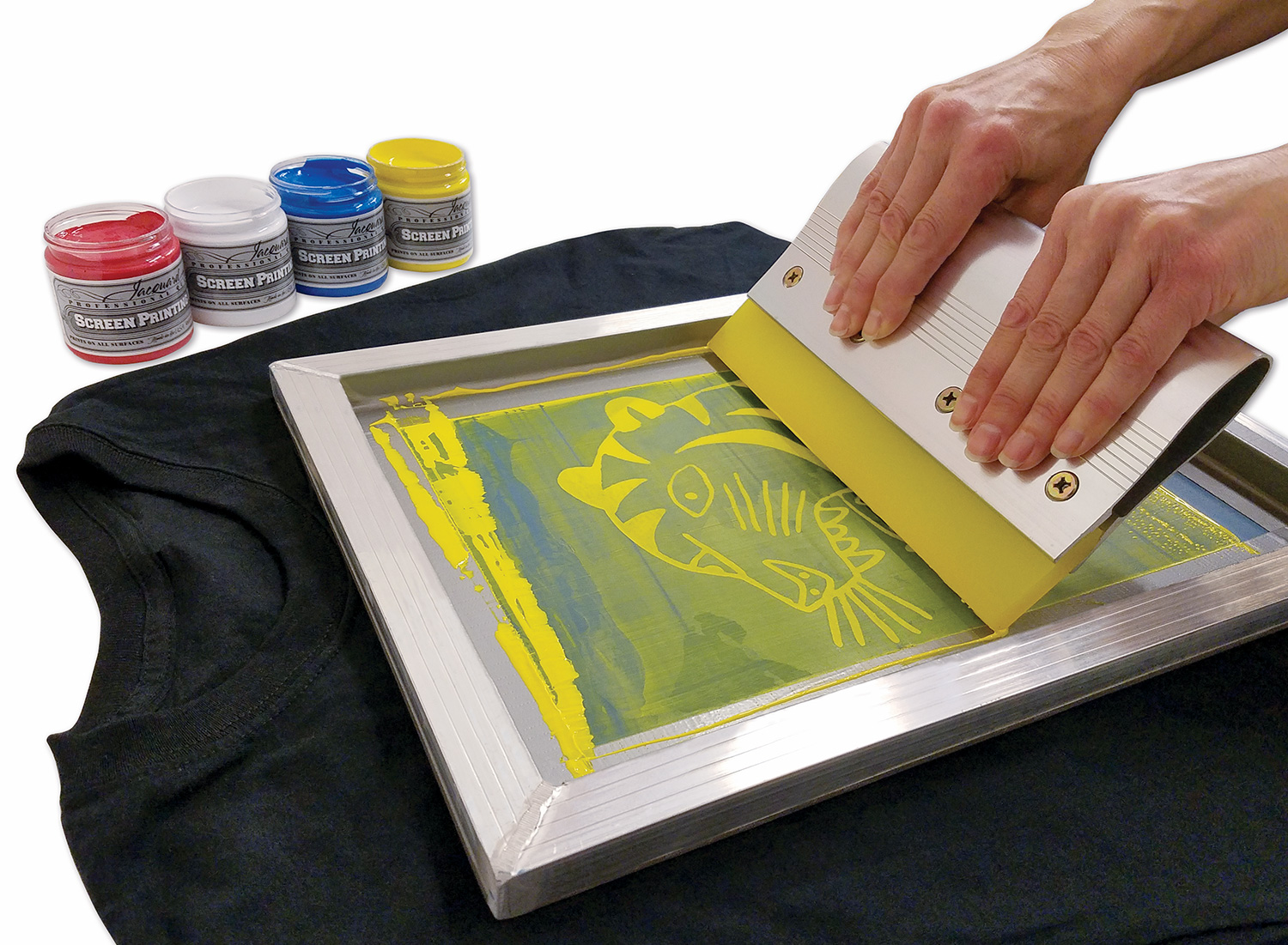Discover the Different Kinds of Screen Printing Techniques for Your Following Project
Screen printing provides a varied variety of methods that can enhance any type of innovative task. From conventional techniques like serigraphy to contemporary advancements such as direct-to-garment printing, each method has its unique advantages. Specialty choices, including environment-friendly and metal inks, present much more opportunities. Recognizing these techniques can substantially influence the final end result. However, the difficulty hinges on picking one of the most appropriate approach for specific needs and preferred impacts. What elements should one take into consideration?

The Essentials of Screen Printing
Screen printing might appear complicated, it is fundamentally a simple process that entails moving ink with a mesh screen onto numerous surface areas. The technique begins with the creation of a stencil, which defines the design to be printed. This pattern is connected to a mesh screen, usually made from polyester or nylon. Once the pattern remains in area, ink is put on the screen and pushed with the mesh making use of a squeegee, leading to the preferred pattern being printed on the underlying material.
Screen printing can be executed on a wide variety of substrates, including material, plastic, and paper, making it a flexible choice for various jobs. The procedure enables for lively shades and detailed layouts, making it popular in industries such as marketing, art, and style. Understanding these basics equips people with the fundamental expertise called for to check out more sophisticated techniques in screen printing.
Conventional Screen Printing Techniques
Conventional screen printing methods have been employed for centuries, preserving the workmanship and virtuosity of this method. This method uses a mesh screen to move ink onto a substrate, such as textile or paper, allowing for resilient and dynamic styles. The process starts with developing a stencil, which blocks particular locations of the screen to manage where the ink will be used.
One prominent strategy is serigraphy, usually utilized for restricted editions and artistic prints. An additional is using water-based inks, which are environmentally friendly and give a soft feel on textiles - 10:9 Design Screen Printing. Furthermore, typical approaches can include hand-operated printing, where artisans use ink with a squeegee, making sure precision and interest to detail
These methods remain valued in the market for their responsive high quality and the unique structures they create, appealing to both makers and consumers who appreciate the heritage of screen printing.
Digital Screen Printing Innovations
As the demand for faster production and customization in the printing sector has surged, electronic screen printing advancements have become a game-changer. This modern technology blends standard screen printing techniques with digital processes, enabling rapid prototyping and detailed designs that were formerly difficult to attain. One significant improvement is the introduction of direct-to-garment (DTG) printing, which helps with high-grade, full-color prints on different fabrics without the demand for screens. In addition, advancements in ink solutions have actually caused environment-friendly options that maintain vivid shades while minimizing environmental effect. The use of automated systems further simplifies production, decreasing labor expenses and enhancing accuracy. These innovations not just accommodate small batch orders and customized layouts but additionally permit quicker turn-around times, making them excellent for businesses concentrated on conference client demands in a fast-paced market. Digital screen printing, subsequently, represents an important evolution in the domain name of printing techniques.
Specialty Screen Printing Methods
Exploring specialized screen printing methods exposes a diverse array of methods that press the limits of creativity and functionality in the printing market. Amongst these, glow-in-the-dark inks supply an one-of-a-kind visual result, making layouts come active in low-light conditions. Metallic inks, understood for their shimmering coating, include a touch of deluxe to published products. Another ingenious method is discharge printing, which eliminates color from the fabric as opposed to adding ink, causing a soft, classic feeling. High-density printing develops a raised appearance on the surface area, boosting responsive interaction. Additionally, water-based inks are acquiring popularity for their lively shades and decreased ecological effect. Each of these specialty techniques satisfies details style needs, enabling artists and brand names to produce standout products that reverberate with their audiences. By leveraging these methods, organizations can elevate their screen printing jobs to new elevations, making certain unforgettable perceptions.
Eco-Friendly Screen Printing Options
Green screen printing options are obtaining grip as the sector shifts towards sustainability. Lasting ink selections and making use of eco-friendly products are essential components in reducing the ecological impact of the printing procedure. By adopting these methods, screen printers can contribute to a more lasting future while maintaining premium results.
Sustainable Ink Selections

Biodegradable Materials Use
As the screen printing market progresses, the incorporation of naturally degradable products is becoming progressively crucial for eco conscious techniques. Developers and makers are currently checking out inks and substrates made from natural, renewable energies that disintegrate more successfully than standard counterparts. These eco-friendly choices reduce plastic waste and minimize environmental effect, straightening with the growing demand for sustainable items.
Common examples include water-based inks and organic cotton materials, both of which decrease harmful chemicals and promote eco-friendliness. Brands that take on these products often enhance their market allure, drawing in consumers who prioritize sustainability. As recognition of ecological concerns remains to rise, the change in the direction of naturally degradable products in screen printing is most likely to get energy, fostering a greener sector standard.
Choosing the Right Strategy for Your Job
Exactly how can one figure out one of the most appropriate screen printing technique for a details task? The choice pivots on several aspects, including the product to be printed on, the intricacy of the layout, and the preferred production volume - 10:9 Design Screen Printing. Direct-to-garment printing is optimal for elaborate styles with countless colors, while typical screen printing stands out for bigger runs of simpler graphics.
Furthermore, consideration of the end-use of the printed product is necessary. For exterior applications, techniques that supply longevity and weather resistance, such as plastisol ink, might be favored. On the other hand, environmentally-conscious projects might gain from eco-friendly materials or water-based inks.
Eventually, recognizing the job's special requirements enables an educated selection, ensuring both aesthetic charm and practical durability. By examining design complexity, product compatibility, and production scale, one can efficiently pick one of the most appropriate screen printing method to meet their task's objectives.
Regularly Asked Inquiries
What Is the Background of Screen Printing?
Screen printing came from old China around 1000 ADVERTISEMENT, evolving through Japan and Europe. By the 20th century, it came to be popular in industrial art and style, transforming how designs were produced and dispersed internationally.

Just how Do I Prepare Art Work for Screen Printing?
To prepare art work for screen printing, one should assure high resolution, utilize a suitable color mode, create different layers for every color, and transform text to describes, assuring compatibility with the printing procedure and desired end result.
What Materials Are Ideal for Screen Printing?
The finest materials for screen printing consist of high-grade inks, durable displays, and ideal substrates like cotton, polyester, or blends. In addition, making use of ideal solution and squeegees can improve the printing procedure and final results.
Can I Screen Publish in your home?
Yes, screen printing at home is feasible. With the right products, arrangement, and techniques, individuals can create top notch prints. Mindful factor to consider of work space and equipment is crucial for effective results.
What Prevail Mistakes in Screen Printing?
Usual blunders in screen printing consist of incorrect direct exposure times, inadequate ink uniformity, misalignment of displays, insufficient cleansing of products, and overlooking to evaluate prints. These mistakes can jeopardize the top quality and precision of the end product.
Screen printing may appear complex, it is fundamentally an uncomplicated process that includes moving ink through a mesh screen onto various surfaces. As the demand for faster production and personalization in the printing industry has surged, digital screen printing technologies have emerged as a game-changer. Checking out specialized screen printing approaches exposes a diverse array of techniques that push the limits of imagination and capability in the printing sector. The finest materials for screen printing include high-quality inks, sturdy website screens, and appropriate substratums like cotton, polyester, or blends (10:9 Design contact). Typical blunders in screen printing consist of incorrect exposure times, poor ink consistency, misalignment of displays, inadequate cleaning of products, and disregarding to evaluate prints